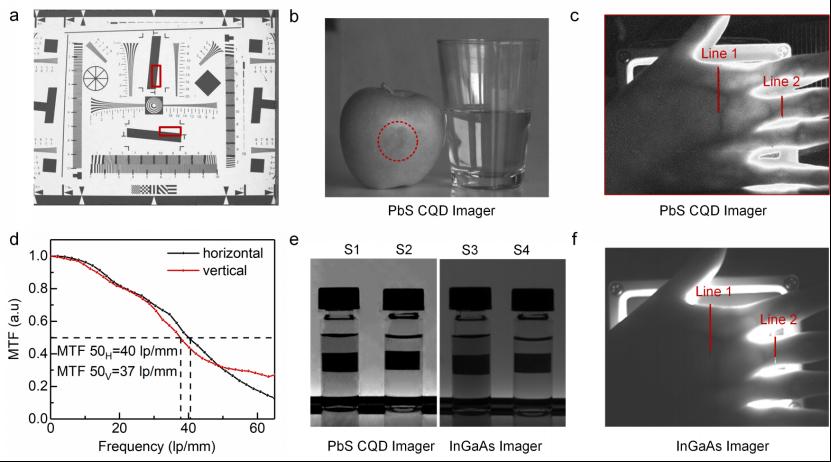The single-chip integration of infrared photodiode and silicon-based ROIC is the most feasible method to significantly reduce the cost of the short-wave infrared imaging chip. It is expected to achieve a cost reduction of more than 100 times without sacrificing image quality, enabling the application of infrared imaging chips in consumer products such as smartphones and autonomous driving. Lead sulfide colloidal quantum dots (PbS CQD) are processed by a low-temperature solution method, with a simple process and good substrate compatibility, and can be integrated with silicon ROIC monolithic, which significantly reduces the production cost of imaging chips, and is expected to promote the large-scale application of near-infrared imaging technology.

To this end, Professor Tang Jiang's team synthesized PbSCQD with an exciton absorption peak at 940nm and obtained a quantum dot paste through ligand exchange. According to the characteristics of PbS CQD, a photodiode with a top incident structure adapted to silicon-based ROIC was designed. The device structure was optimized through simulation analysis and experiment so that the depletion region was close to the incident light, and the effective separation and collection of photogenerated carriers were realized, thus improving the external quantum efficiency of the device. Given the damage to the PbS CQD interface caused by high-energy particles of magnetron sputtering in the preparation, the interface defects were reduced by introducing the C60 interface passivating layer, and it was proved that the detector defect concentration was reduced to 2.3×1016 cm-3 through the measurement and analysis of drive stage capacitance and capacitor-voltage, which was close to the optimal value of the widely studied PbS CQD photodiode. The reported response cutoff wavelength of the top-incident PbS CQD photodiode is about 1150nm, the detection rate is 2.1×1012Jones, the bandwidth of −3dB is 140 kHz, and the linear dynamic range is over 100 dB.

Based on the optimal PbS CQD photodiodes, the team further realized the integration and fabrication of low-cost, high-performance PbS CQD imaging chips. On the base of CMOS readout circuit, PbS CQD photodiode was directly deposited by low temperature process to interconnect it with the readout circuit at a pixel level, and an infrared imaging chip with pixel size of 640×512 was successfully prepared. Based on the device structure design and functional layer optimization, the infrared peak external quantum efficiency of the chip is as high as 63%, which is about twice that of the same type PbS CQD chip. At the same time, the dark current density is about 17.8 nA/cm2, which is also the lowest level of a similar chip.

The CQD imaging chip produced by this team has imaging effects comparable to those of commercial InGaAs chips, with lateral and longitudinal resolutions of 40 lp/mm and 37 lp/mm. Under infrared light, fruit bruises and subcutaneous vein vessels can be clearly seen, demonstrating the application of PbS CQD infrared imaging chip in fruit detection, solvent identification, vein imaging and other aspects, and proving its wide application potential.



